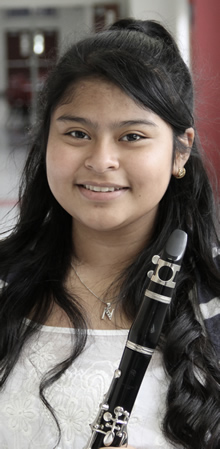Monday, May 9, 2016
Why Are My Clarinets Playing Flat? by Tamarie Sayger
This article is being re-distributed with permission from the author. It is taken from banddirectorstalkshop.com. The first half of the article is found below and at the bottom, there is a link to finish the article on the original site.
 If you have clarinets playing flat, it needs to be addressed immediately as it is often a symptom of a much more significant problem. The good news is that by fixing the things mentioned below, it should not only improve their intonation, it should drastically improve their tone as well.
If you have clarinets playing flat, it needs to be addressed immediately as it is often a symptom of a much more significant problem. The good news is that by fixing the things mentioned below, it should not only improve their intonation, it should drastically improve their tone as well.
Mouthpiece & Barrel:
Have the students play for you individually on mouthpiece/barrel. The pitch should be an F# (concert pitch). If they are sharp, that's ok (for now). They should not be flat. Let the child watch a tuner. (If they are up to pitch on mouthpiece/barrel but not on the instrument, skip down to the part about "adding the instrument.") Have a mirror available so they can see what you are looking for.
If they are flat, address these things:
Voicing -- They should be thinking/voicing "EEE" in their mouth. The tongue should be as high as possible. You can also say "high and forward." Have them say "aaah" then "eee" to show them how much the tongue can move in their mouth. Then have them play and think "eee." It's possible they can pull the pitch up enough to hear it, kind of like a "siren." Have them try to hold the pitch as high as possible and then keep thinking "eee" more. You can also try having them say "hee."
Anchor -- The top of the mouthpiece should be firmly on the upper teeth. I highly recommend thick mouthpiece patches. If there is any way your band program can just pay to get them for all your clarinetists it is well worth the investment. If not, send out an email to parents asking them to get them as soon as possible. They should be securing the mouthpiece to the top teeth by pressing up at the angle of the instrument. (Not directly up to the ceiling, but more up into the teeth, mouth.)
Check this by gently "wiggling" the mouthpiece as they play. It should not move at all.
Corners/chin -- Have the students look in a mirror as you cover this area. Corners of the mouth should be "gripping" the mouthpiece. Have the student smile and pull the corners back. Then have them the corners as far forward as they can. Tell them that the forward feeling is what they should feel when playing -- never smiling. It should resemble at drawstring purse. The chin should be flat. I look for "muscles" pulling the chin down flat.
Air Stream -- Fast, cold air across the reed. Have them hold their hand out in front of them about two feet in front of their face. Have them try to blow air on their hand in a fast, focused air stream. Tell them when they blow they are not blowing down the instrument, they are blowing across the reed to make the reed vibrate. Have them try playing again, and as they are playing put your hand two feet in front of their face. Tell them to visualize sending a laser of air at your palm as they blow through the mouthpiece.
Angle of the instrument -- The angle of the instrument to the body should be 25-40 degrees depending on the student's lips and teeth. It should be basically in line with the knees. I often prefer it a little inside the knees and have put a piece of tape from knee to knee and asked kids to keep it inside the knee. This varies depending on the child, but it is a good visualization when the instrument is added.
But here's the kicker -- if the child is dipping their head when they play it will look like they have the correct angle, but they don't. They need to hold their head level (you can place a book on top to give them the right feeling) and lift the instrument to the face, not dip their head to the instrument. Tell them to feel like there is an imaginary string from the ceiling to their forehead holding it up. One way to help students remember this is to raise their stands considerably higher than the average stand position.
Since they will be on mouthpiece and barrel for this stage of diagnosing, have them adjust the angle of the mouthpiece/barrel and then when they add the instrument you will have them hold the same angle.
But wait...there's more! To read the second half of the article, please click this link to go to the original source material on banddirectorstalkshop.com.
Tamarie Sayger, a clarinet specialist, has taught band for five years, elementary music for three years, and private clarinet lessons for 14 years. She enjoys teaching students from beginner level through high school. When she's not teaching clarinets to think "eee" and 'anchor', she is blessed to spend time with her husband, BJ, and their two children. |
Contact Your Local Palen Music Center Representative
Can we assist you with
anything? Please contact your local Palen Music Center school road
representative for all of your music education needs.
